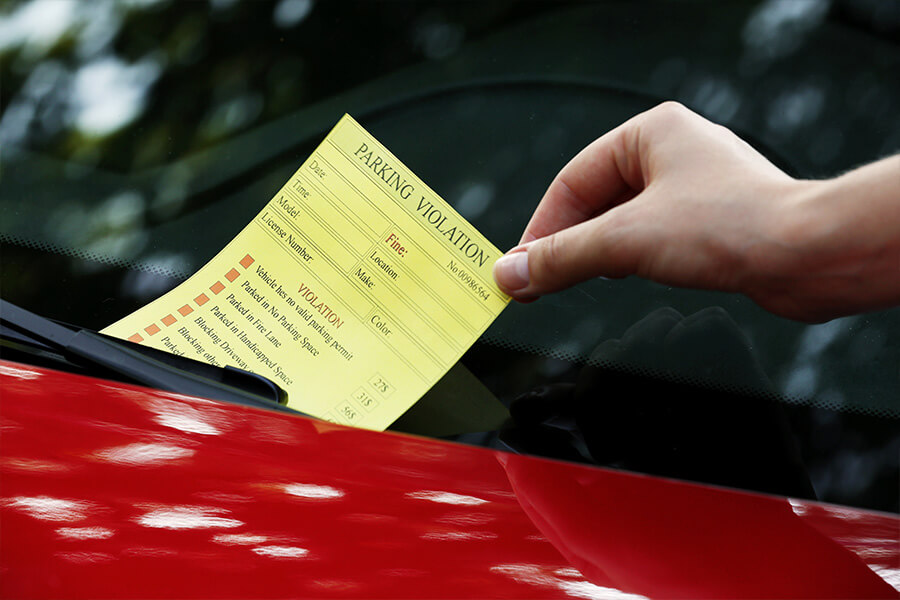Vehicle Impounded What To Do
Finding out that your vehicle has been impounded can be a stressful and overwhelming experience. Whether it’s due to a parking violation, expired registration, or other legal issues, knowing the steps to take can help you navigate the process efficiently and recover your vehicle without unnecessary delays. This guide will walk you through the essential actions you need to take if your vehicle gets impounded.
Reasons for Vehicle Impoundment
Common reasons for vehicle impoundment: Vehicles can be impounded for various reasons, and understanding these can help you avoid similar situations in the future. Common reasons include:
- Parking Violations: Parking in a no-parking zone, blocking a fire hydrant, or parking in a disabled spot without proper authorization can all lead to your vehicle being towed. In many cities, repeat offenders or those who owe a significant amount of unpaid parking fines are at higher risk of impoundment.
- Expired License or Registration: Driving with an expired driver’s license or vehicle registration is illegal in most places and can result in your vehicle being impounded if you are stopped by the police. Regularly check your license and registration renewal dates to avoid this.
- Criminal Involvement: If your vehicle is involved in a crime, or if it is used as evidence in an investigation, it can be impounded. This could range from minor infractions, like unpaid tickets, to more serious offenses such as DUI (Driving Under the Influence) or involvement in a criminal activity.
- Unpaid Fines: Accumulation of unpaid fines or tickets can lead to impoundment. Many municipalities have laws that allow for the towing and impounding of vehicles with outstanding violations.
- Lack of Insurance: Being involved in an accident without proper insurance can also result in impoundment. Ensure that you always have valid insurance coverage to protect yourself and others on the road.
Understanding why your vehicle was impounded is crucial as it will influence the steps you need to take to retrieve it. Additionally, it can help you take preventive measures to avoid future impoundments.
Immediate Steps to Take
What to do first when your vehicle is impounded: The first thing you should do when you discover your vehicle has been impounded is to stay calm. Panicking won’t help and could lead to mistakes. Instead, follow these immediate steps:
- Confirm the Impoundment: Ensure that your vehicle has indeed been impounded and not stolen. Contact local law enforcement to verify the status of your vehicle. In many cities, there is a non-emergency police number you can call to check if your vehicle was towed and where it was taken.
- Obtain Information: Gather details about where your vehicle is being held, the reason for impoundment, and any immediate actions required on your part. This might include contacting the impound lot directly, understanding the fees involved, and knowing the specific documents you will need to retrieve your vehicle.
Understanding the specifics of why and where your vehicle was taken can save you time and reduce frustration. It also helps you gather the right resources and documentation quickly.
Understanding Your Rights
Knowing your rights during vehicle impoundment: As a vehicle owner, you have certain rights when it comes to the impoundment process. These include:
- Notification: The right to be notified of the impoundment and the reason for it. In many jurisdictions, the police or the towing company is required to provide you with written notice of the impoundment, including details about where your vehicle is being held and why it was impounded.
- Hearing or Appeal: The right to a hearing or appeal if you believe the impoundment was unjust. For example, if your vehicle was towed from a legal parking spot or if there was a clerical error, you can challenge the impoundment. Each area has its own process for appeals, which often involves requesting a hearing within a specified timeframe.
- Personal Belongings: The right to retrieve personal belongings from the impounded vehicle. While your vehicle might be held, you can typically collect personal items from it. Be aware of the specific rules regarding access to your vehicle, as some impound lots require an appointment or charge a fee for access.
Knowing your rights can help you address any potential abuses or mistakes in the impoundment process. If you feel your rights have been violated, it’s important to document everything and seek legal advice if necessary.

Contacting the Impound Lot
How to contact the impound lot: Once you have confirmed that your vehicle has been impounded, the next step is to contact the impound lot where your vehicle is being held. Important information to ask for includes:
- The address and contact number of the impound lot: You will need this information to plan your visit and to make inquiries.
- The hours of operation: Knowing the hours can help you avoid making a trip when the lot is closed. Many impound lots have limited hours, especially on weekends and holidays.
- The documentation required to retrieve your vehicle: Ask for a detailed list of documents you need to bring. This typically includes proof of ownership and a valid driver’s license.
- The fees and fines associated with the impoundment: Request a detailed breakdown of all the charges you need to pay to retrieve your vehicle. This can include towing fees, storage fees, and any outstanding tickets or fines.
Having this information beforehand will make your visit to the impound lot more efficient and help you prepare all necessary documents and payments.
Gathering Necessary Documentation
Documents needed to retrieve your vehicle: Before heading to the impound lot, make sure you have all the necessary documentation. Typically, you will need:
- Driver’s License: A valid driver’s license is essential for proving your identity.
- Proof of Ownership: Vehicle title or registration. This proves that you are the legal owner of the vehicle.
- Proof of Insurance: Up-to-date insurance documents. Some impound lots require proof of insurance before releasing a vehicle.
- Payment Method: Cash or credit/debit card for any fees or fines. Ensure you have a way to pay the required fees, as some impound lots may not accept all forms of payment.
Having these documents ready can expedite the process of retrieving your vehicle. If you are missing any documentation, contact the impound lot to ask about alternative arrangements or additional documents that may be accepted.
Paying Fees and Fines
Understanding and paying the associated fees and fines: Retrieving your vehicle usually involves paying various fees and fines. These can include:
- Towing Fees: The cost of towing your vehicle to the impound lot. This fee varies depending on the distance and the company that towed your vehicle.
- Storage Fees: Charged per day for the time your vehicle is stored at the impound lot. The longer your vehicle remains impounded, the higher the storage fees will be.
- Administrative Fees: Additional costs for processing the impoundment. These fees cover the administrative work involved in handling your impounded vehicle.
- Outstanding Tickets: Any unpaid tickets or fines that need to be settled. In some cases, you must clear these fines before you can retrieve your vehicle.
Make sure you understand all the charges and have the means to pay them, as most impound lots will not release your vehicle until all fees are settled. Some lots may accept payment plans or offer assistance programs if you are unable to pay the full amount immediately.

Legal Recourse and Appeals
How to appeal an impoundment: If you believe your vehicle was wrongfully impounded, you have the right to appeal the decision. Steps to take include:
- Request a Hearing: Contact the relevant authority to request a hearing or appeal. This is often a formal process that requires you to submit a written request within a certain timeframe.
- Gather Evidence: Collect any evidence that supports your claim, such as photographs, witness statements, or documentation. For instance, if your vehicle was towed from a legal parking spot, take pictures of the spot and any signs that were present.
- Attend the Hearing: Present your case clearly and concisely at the hearing. Be prepared to explain why you believe the impoundment was unjust and provide all supporting evidence.
Legal recourse can be time-consuming, but it’s a necessary step if you believe your rights have been violated. Winning an appeal could result in the return of your vehicle without fees or the reimbursement of any fees you have already paid.
Preventing Future Impoundments
Tips to avoid future vehicle impoundments: To avoid future impoundments, consider the following tips:
- Park Legally: Always park legally and pay attention to parking signs and regulations. Make it a habit to double-check the parking rules in unfamiliar areas.
- Stay Up-to-Date: Keep your vehicle registration and insurance up to date. Set reminders for renewal dates to avoid lapses.
- Address Tickets Promptly: Address any traffic tickets or fines promptly. Ignoring fines can lead to increased penalties and potential impoundment.
- Valid License: Avoid driving with a suspended or expired license. Regularly check the status of your license and renew it as needed.
Conclusion
By staying informed and proactive, you can reduce the risk of your vehicle being impounded again. Additionally, consider enrolling in defensive driving courses or other educational programs that can help you maintain good driving habits. For any auto lender who is reading this article, if you are looking for great repossession lot management services to help reduce storage fees and receive notification when your vehicle enters or exits a repo lot nationwide, contact us today at GPS Leaders and ask about our Buy Here Pay Here Lender GPS Tracking software!



